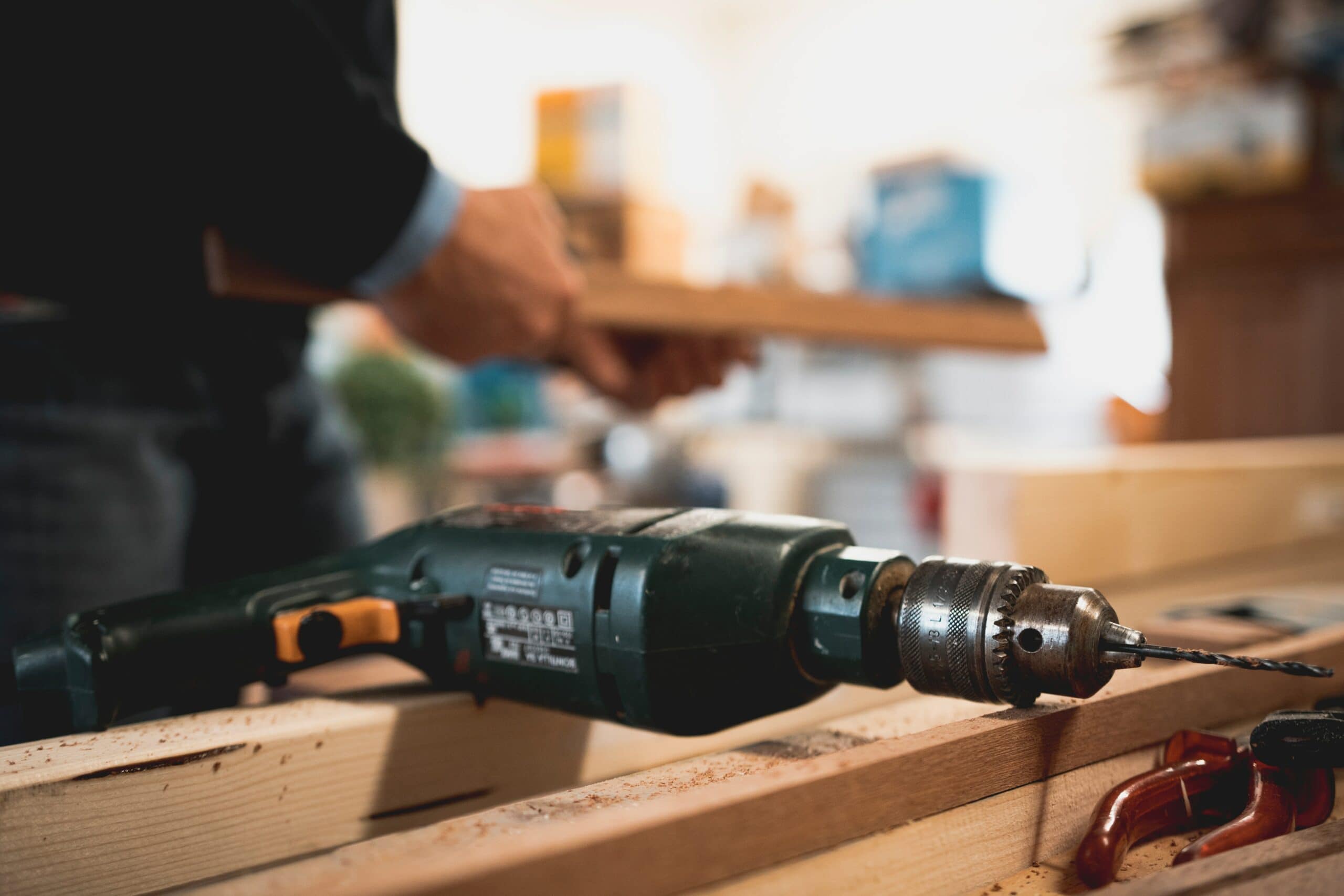13 Different Types of Wood Drill Bits (With Pictures)
-

- Last updated:

If you are a woodworker, you will need to make plenty of holes in your projects, so the bits that you use are incredibly important. With so many different bits available, though, it can be difficult to know which is best. If you are a beginner woodworker, you probably want to know which ones you should purchase first. Keep reading as we look at several different types of bits and explain what you can use them for, so you will have a better idea of what you need for your workshop.

The 13 Different Types of Wood Drill Bits
1. Multipoint Drill Bit
- Uses: Most projects
The multi-point drill bit is the most common type of bit that you’ll see in both the woodshop and metal shop. The bit’s tip has a V shape, and the multiple points help it cut into the surface and remove material faster. It’s inexpensive, versatile, and easy to find.
2. Pilot Point Drill Bit

- Uses: Straight clean holes
A pilot point drill bit looks similar to a multi-point drill bit, but it has a pointy tip that enables you to create a straight and clean hole that doesn’t wander off the mark.
3. Lip and Spur Bit
- Uses: Clean straight holes
A lip and spur bit is similar to a pilot point drill bit in that it also has a pointy tip that helps prevent the bit from wandering as you drill into the wood, enabling you to create a straight hole more consistently. The spur is a pointy part that starts carving out the hole’s perimeter before the rest of the bit makes contact.
4. Auger Drill Bit
- Uses: Deep uniform holes
The auger drill bit is a good choice if you need to dig deep, uniform holes in a large piece of lumber. The bit can be quite large and has a special design that helps prevent clogs as it removes material.
5. Installer Drill Bit
- Uses: Installing wiring
Installer bits are a special type of bit used to install difficult wiring. It has a tiny hole in the tip to insert the wiring that you are trying to pass through the material, and the bits can be up to 18 inches long.
6. Countersink Drill Bit
- Uses: Installing countersunk screws
A countersink drill bit often has a pointy tip to help drill a more accurate hole that a screw can use as a starter, but after a short distance, the bit widens out to carve the wood so you can install a screw flush with the surface for a better appearance.
7. Step Drill Bits
- Uses: Widening existing holes
Step drill bits have a wide variety of uses and are extremely versatile. They are perfect for cutting into sheet metal, pottery, and ceramics. In the woodshop, there is no better choice for enlarging existing holes.
8. Forstner Drill Bits
- Uses: Creating large holes in thin wood
Forstner drill bits are the perfect tool to drill large round holes into a flat board. It works extremely efficiently but doesn’t remove material like a standard bit, so it’s not as well suited to deep holes. It can also create a great deal of friction and heat at high speeds, so you need a drill you can use at a slow speed.
9. Hole Saw
- Uses: Creating large holes in thin wood and metal
The hole saw is a type of drill bit that is similar to the Forstner bit. However, you can use it with higher torque for deeper holes, and you can even use it to cut steel and other harder materials that would create too much heat for the Forstner. The downside is that the holes aren’t as clean.
10. Hinge Sinkers
- Uses: Creating circular hinges for furniture
As the name suggests, these bits create circular hinges in furniture manufacturing projects. It provides a clean and neat hinge and is similar to a hole saw but is exclusively for furniture.
11. Adjustable Drill Bits
- Uses: Different diameter holes
Adjustable drill bits enable you to cut various hole sizes with a single bit. There is no flute, so you can’t drill too deep, but it is incredibly versatile and belongs in any woodshop.
12. Pocket Hole Bits
- Uses: Helps join boards edge to edge
Pocket hole bits create the pocket hole along with the guide hole for placing the screws, which is an essential part of furniture building. It can help you build larger surfaces by joining boards edge to edge.
13. Spade Drill Bits
- Uses: Wide diameter holes
Spade drill bits are great bits for creating clean and precise holes in thin boards. It’s also a popular bit to use with routers due to its durability and ability to remove material quickly.

What Type of Wood Drill Bit Should I Get?
The type of bit that you need for your workshop depends on the type of projects that you intend to tackle. Most people will need a good bit for making standard holes for screws. Multi-point bits are extremely common, but you will likely make straighter holes that you’re happier with if you use a pilot point or a lip and spur bit. A wide diameter bit is also essential, so we recommend the hole saw or the Forstner bits.
Summary
There are many bits to choose from, but you can get to work with a good small diameter bit, like the lip and spur bit, and a wide diameter bit, like the Forstner bit. You can purchase others as you need them to help keep costs down and get projects underway.
Featured Image Credit: blickpixel, Pixabay
Contents

